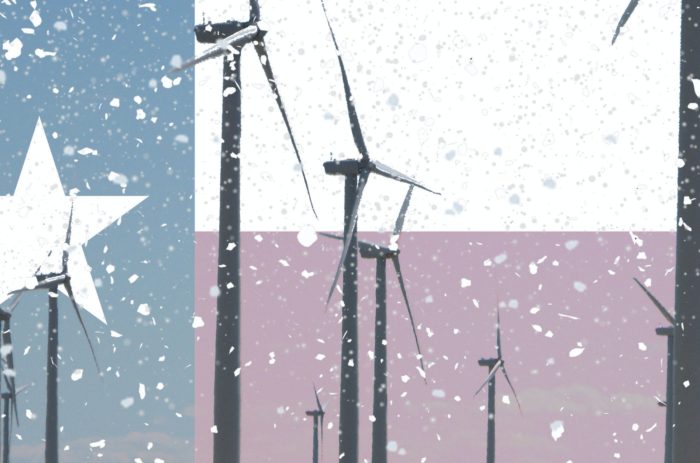redo Jump to...
print Print...
(by William Tucker, Spectator.org) – Get into a debate with any anti-nuclear advocate … and they will soon lay down their trump card – “nuclear proliferation.” When I interviewed three executives of Greenpeace in Washington two years ago, I began with a deliberately naïve question – “What’s wrong with nuclear power?” They practically levitated out of their chairs in horror. “Do we have to explain it to you?” they bellowed. “Did you ever hear of nuclear weapons?”
Last December, Mark Jacobson, professor of environmental engineering at Stanford, produced yet another dreary study showing that wind and solar energy are the best way to power America. What made it interesting is that he criticized biofuels because they chew up huge quantities of land and would need half the lower 48 to replace our oil consumption.
So how about nuclear power, whose land requirements are about 1,000,000,000,000 times smaller than those of solar collectors? Jacobsen dismissed nuclear in one paragraph:
Once you have a nuclear energy facility, it’s straightforward to start refining uranium in that facility, which is what Iran is doing and Venezuela is planning to do. The potential for terrorists to obtain a nuclear weapon or for states to develop nuclear weapons that could be used in limited regional wars will certainly increase with an increase in the number of nuclear energy facilities worldwide.
Wake up, Professor Jacobsen! You’re living in the 21st century. Things have changed since 1976. America no longer decides these issues.
[The city of] Berkeley [California] has carried all this one step further by declaring itself “nuclear-free.” Any company doing business with the city must sign a pledge to refrain from nuclear research. This became a crisis last month when the [city’s] Peace and Justice Commission (yes, that’s its name) refused to grant a waiver to 3M Corporation so it could service the self-checkout scanners in the public library. The machines were in need of repair, no other company services them, and patrons were tired of waiting in long lines. Still, the commission wouldn’t relent. “We really mean it when we say we don’t want to be part of the nuclear machinery,” said commissioner George Lippman. “The act is meant to be a blow against nuclear war.” (The Berkeley City Council finally relented and overruled them.)All this heroic effort is built on the premise that it is still 1976 and the United States is the world’s master of nuclear technology. Countries all over the world have gone ahead without us. Meanwhile, by hiding our heads in the sand, we have managed to cripple our energy sector, sacrifice our technological leadership and are on the verge of becoming an economic colony of the more advanced nations. Although it may come as a shock, we are no longer leading the parade.
………………….
… Israel, South Africa, Pakistan and North Korea have all developed their own nuclear weapons. ([Although] South Africa destroyed its stockpile after Nelson Mandela took over.) Iraq and Syria were toying with the technology at various points and Iran is still trying. North Korea built a bomb with plutonium extracted from a reactor given to it by the Soviets. In 2004, shortly after we invaded Iraq, Dr. Abdul Qadeer Khan, the “father of Pakistan’s nuclear weapon,” confessed to running a clandestine international operation that provided centrifuges for uranium enrichment to North Korea, Libya, and Iran. Two of Khan’s assistants also reportedly had discussions with Osama bin Laden. Pakistan President Pervez Musharraf pardoned Kahn shortly after his confession and he is lionized as a hero throughout the Islamic world.
Now here’s the point. None of this has ever had anything to do with our reprocessing nuclear fuel [which is the recycling of spent reactor fuel – one of the recycled materials is plutonium, the only element besides enriched uranium that undergoes nuclear fission]. [In 1973, President Jimmy Carter listened to environmental groups and canceled the authorization for a reactor which was scheduled to use recycled plutonium from a privately financed company in South Carolina. Reprocessing was abandoned – immediately creating the everlasting problem of “nuclear waste.”] It’s a great big world out there. There are a lot of smart people and nuclear technology has never been that difficult to master. None of these countries have had to steal anything from us, nor do we act as gatekeepers as to who gets what. Instead, by abandoning reprocessing, we have put ourselves back in the middle of the pack.
Nuclear power is now keeping France afloat. Besides having Europe’s lowest electric rates — plus the lowest carbon emissions — electricity is now France’s third largest export. Belgium, Germany and Italy would close down tomorrow if France stopped sending them nuclear electricity. Marketing its technology to other countries has also become a major source of revenue. France is now building facilities in Finland, China, South Korea, Poland, and — believe it or not — that backwater of nuclear technology, the United States of America.
Russia, meanwhile, has bounced back from its economic doldrums, put containment structures around its reactors (a little detail it overlooked at Chernobyl), and renewed nuclear construction. The Russians brought their first new reactor online in 2001 and are now planning to add two or three more per year through 2030. They are also building reactors for China and Bulgaria and have signed various technological pacts with Brazil, Egypt, Morocco, Algeria, Vietnam, South Korea, Finland, Chile, and Bangladesh. In November 2008 the Russians announced they would build a reactor in Venezuela for Hugo Chavez.
WHERE DOES THIS leave us? Well, in 2005 George Bush, Jr. tried to revive America’s nuclear leadership with the Global Nuclear Energy Partnership (GNEP). The deal was we would build reactors for other countries, then keep control of the fuel so they couldn’t extract plutonium for nuclear weapons. This would mean reviving America’s nuclear reprocessing industry. GNEP hasn’t made much progress, however, and the rest of the world is moving along without us. In 2006, when I visited the Idaho National Laboratories, the Chinese nuclear delegation was passing through, consulting American scientists on which technology to pick for their new construction program. They eventually chose Westinghouse’s Advanced Passive 1000 design. Those reactors are already under construction. Meanwhile, we are at least five years from putting shovels in the ground for our first AP 1000. Nobody will be looking to us for leadership in the future.
In fact, there is hardly any nuclear industry left in this country. During the 1970s boom, Westinghouse and General Electric were the “big two,” with Babcock and Wilcox chipping in an occasional project (including Three Mile Island). B&W is still servicing its existing facilities but has no new designs. Toshiba bought Westinghouse in 2007. General Electric is peddling its “Generation III” ESBWR (Economic Simplified Boiling Water Reactor) but when the Nuclear Regulatory Commission ranked 19 applicants for federal construction loan guarantees last October, the ESBWR came out near the bottom. Exelon, the nation’s second largest reactor owner, canceled two ESBWR projects and GE’s nuclear days may be just about over.
All the new nuclear construction in the U.S. is now being undertaken by Areva, the French nuclear giant. Last May Areva announced plans for a uranium enrichment facility in Idaho Falls and in October said it will join Northrop Grumman in building a nuclear components factory in Newport News. When asked how Areva planned to fund all these projects in the midst of a credit crisis, Jacques Besnainou, head of Areva’s American operations, smiled and replied, “Cash.” Reactors generally make about $2 million a day.
And so the world nuclear revival goes on without us. Meanwhile, American anti-nuclear activists sit like Buddhist monks, contemplating their navels and chanting, “I have banned all thoughts of nuclear from my head. Everyone else must do the same thing, too.”
So what will happen if Russia decides to look the other way while Hugo Chavez extracts a little plutonium and develops a bomb to defend himself against the Great Gringo of the North? We certainly won’t have anything to say about it.
It would be poetic justice if he aimed it at Berkeley. He’ll probably choose Dallas or New York or Washington instead.
William Tucker is most recently the author of the new book Terrestrial Energy: How Nuclear Power Will Lead the Green Revolution and End America’s Long Energy Odyssey (Bartleby Press).
First published at Spectator.org on February 3, 2009. Reprinted here February 5, 2009 with permission from The American Spectator. Visit the website at Spectator.org.
Questions
1. According to Mr. Tucker, for what reason are people opposed to nuclear power? (e.g. leaders of the environmental group Greenpeace, a professor at Stanford University, the city government of Berkeley, California)
2. What benefits has France received from using nuclear power?
3. In which countries is Russia building nuclear reactors? With which countries has Russia signed technological pacts?
4. Do you think so many countries would be using nuclear power if it was as dangerous as opponents say? Explain your answer.
5. Which countries have developed their own nuclear weapons?
6. What is the main point of William Tucker’s commentary?
7. Do you think Mr. Tucker makes a persuasive argument for using nuclear power in the U.S.? Explain your answer.
OPTIONAL: Email your reaction to William Tucker’s commentary to source@terrestrialenergy.org. Remember to identify yourself (name, school, state), name the date/headline of the article you are commenting on, and that you read it at StudentNewsDaily.com. Be clear, concise and polite.
Background
Under the United Nation’s NPT (Non Proliferation Treaty), countries are not allowed to make nuclear weapons (except for the 5 that had nuclear weapons prior to the treaty – the U.S., Russia, China, France, the United Kingdom). Safeguards are used to verify compliance with the Treaty through inspections conducted by the UN’s IAEA (International Atomic Energy Agency).
Resources
Visit Mr. Tucker’s website at terrestrialenergy.org. If a brief video on nuclear energy does not begin to play, click on “View Intro” in the right-hand nav bar.

